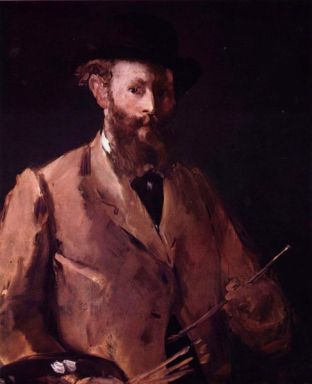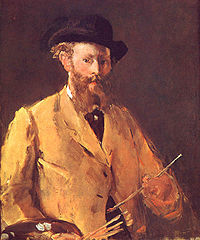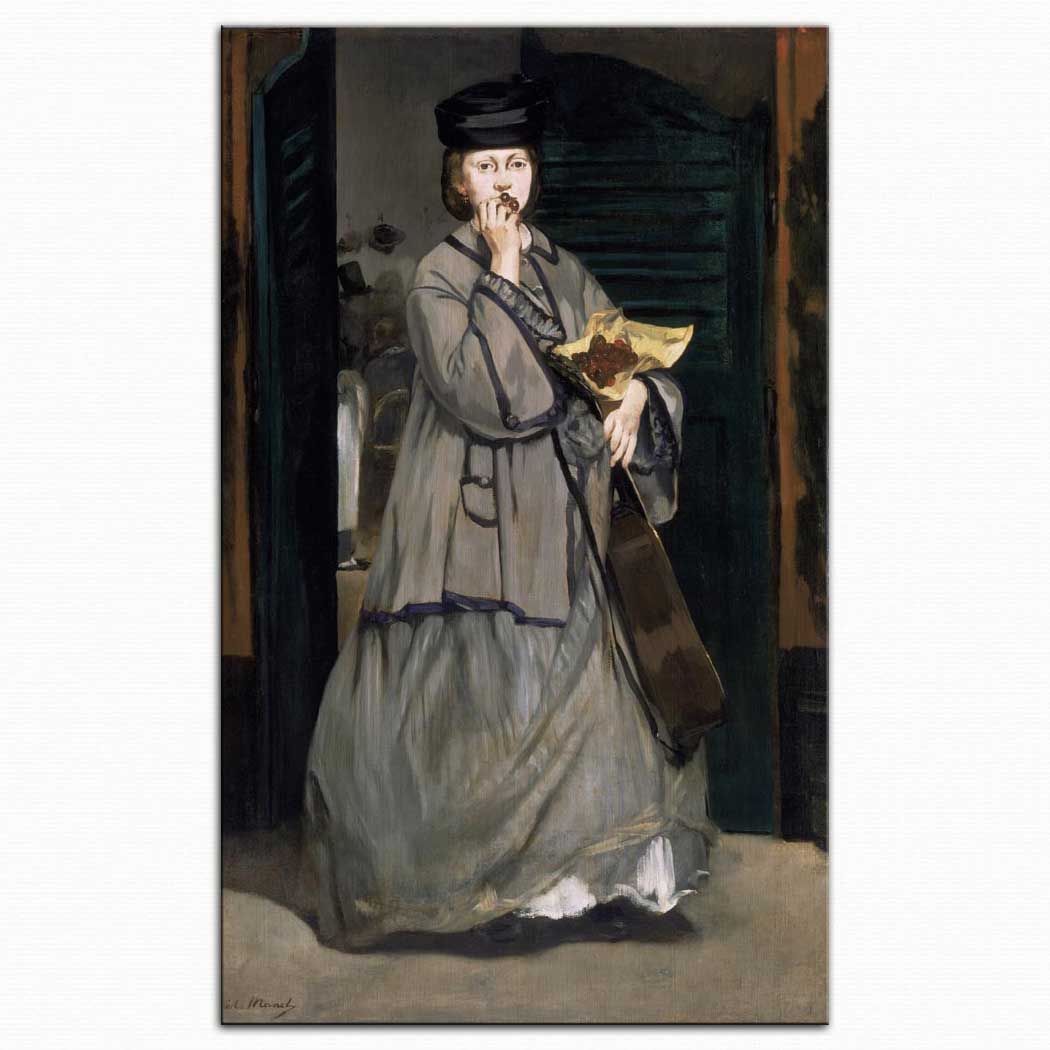
A French Impressionist woman named Berthe Morisot became a frequent visitor at Édouard’s studio.

Along with it, Édouard also exhibited “The Balcony”.

Édouard then thanked Zola and as a sign of gratitude, Édouard made a portrait of Zola that was exhibited at the Salon on 1868. A young novelist named Émile Zola, who was impressed by Édouard’s naturalism of work, made an article in which he praised Édouard for his passion in painting. He exhibited about a maximum of 50 of his paintings.

There, he exhibited some of his works involving his paintings of bullfights and toreadors. Having several of his works being rejected from the 1967 Universal Exposition, Édouard stood up a stall at the corners of Avenue Montaigne and Pace de l’Alma. This created scandal because they judged it as a painting which displays immorality. It was a painting with the use of oil on canvas. In 1865 one of his paintings, called Olympia, which was created two years ago, brought about a scandal. In 1863, Édouard met and married Suzanne Leenhoff, who was a Dutch woman that taught him the piano and gave him a child before marriage. Then, in 1861 at the Salon, Édouard exhibited the Spanish Singer.įrom 1862 to 1865, Édouard participated in exhibitions prepared by the Martinet Gallery. As he was painting his work, many passersby watched with much curiosity at him elegantly dressed while he would start painting his canvases in the open air. Édouard also encountered a poet named Charles Baudelaire who suggested Édouard to paint the “Concert in the Tuileries Gardens” in 1862. He painted “The Boy with Cherries” in 1858 and “The Absinthe Drinker” in 1859. In 1850, Édouard joined the studio of a classical painter named Thomas Couture and after six long years, Édouard was able to set up his studio which he shared with a painter named Albert de Balleroy. Édouard also took an entrance examination for naval college, but he failed twice so his father gave in to his son’s desire to paint. His father didn’t allow Édouard to be a painter, instead he wanted him to be a lawyer but Édouard refused. In a year, his interest was only in drawing courses. In 1839, he went to school at Canon Poiloup in Vaugirard and studied French and the classics.

His father was Auguste Manet, who worked at the Ministry of Justice, and his mother was Eugénie-Désirée Fournier. Learn more.Édouard Manet was born on January 23 of 1832 in Paris, France. The International Image Interoperability Framework (IIIF) represents a set of open standards that enables rich access to digital media from libraries, archives, museums, and other cultural institutions around the world. (circa) or BCE.ġ871 Medium Lithograph in black, with scraping, on ivory chine laid down on ivory wove paper (chine collé) Dimensions Image: 46.8 × 33.7 cm (18 7/16 × 13 5/16 in.) Primary support: 47 × 33.7 cm (18 9/16 × 13 5/16 in.) Secondary support: 60.4 × 46 cm (23 13/16 × 18 1/8 in.) Credit Line Print and Drawing Club Fund Reference Number 1957.355 IIIF Manifest Dates may be represented as a range that spans decades, centuries, dynasties, or periods and may include qualifiers such as c. Status Currently Off View Department Prints and Drawings Artist Édouard Manet Title The Barricade Place France (Artist's nationality) Dateĭates are not always precisely known, but the Art Institute strives to present this information as consistently and legibly as possible. Here though, instead of Emperor Maximilian of Mexico-a Hapsburg installed by Napoleon III and executed at the hands of a resurgent Mexican army-Manet depicted insurgent Parisian Communards executed by the French army, as it suppressed the uprising.
#Edouard manet series#
The troops here mirror the firing squad in Édouard Manet’s The Execution of Maximilian (1868–69), a series of paintings that, due to their political intonations, were not exhibited in Paris under Napoleon III. Like Civil War (1871/73), this print is set during the street fighting of the Paris Commune.


 0 kommentar(er)
0 kommentar(er)
